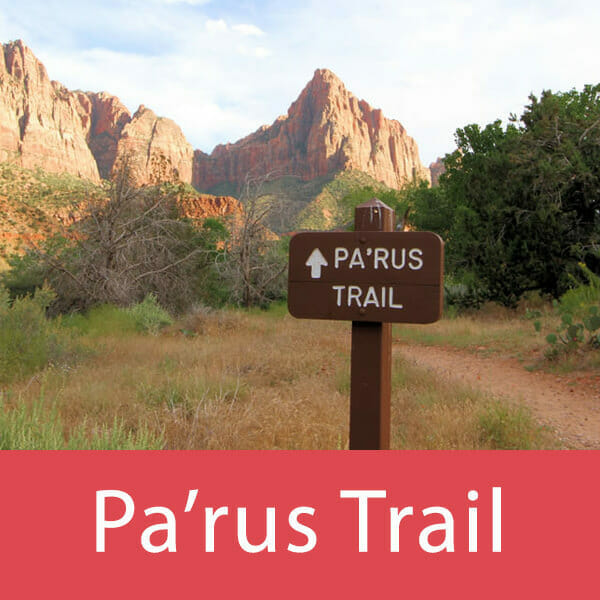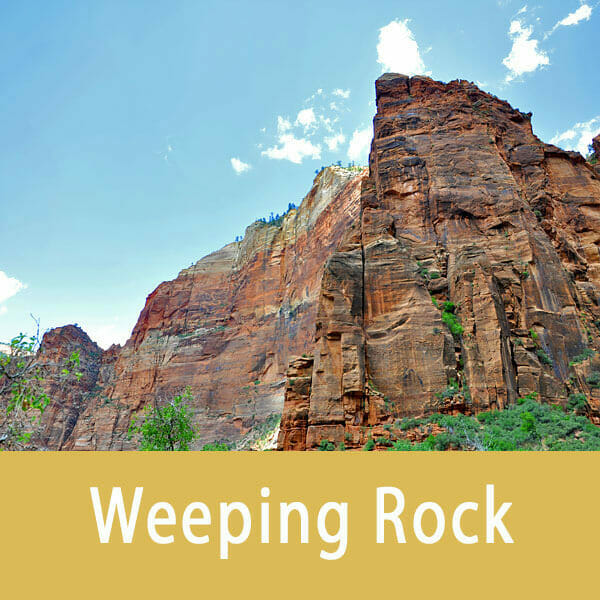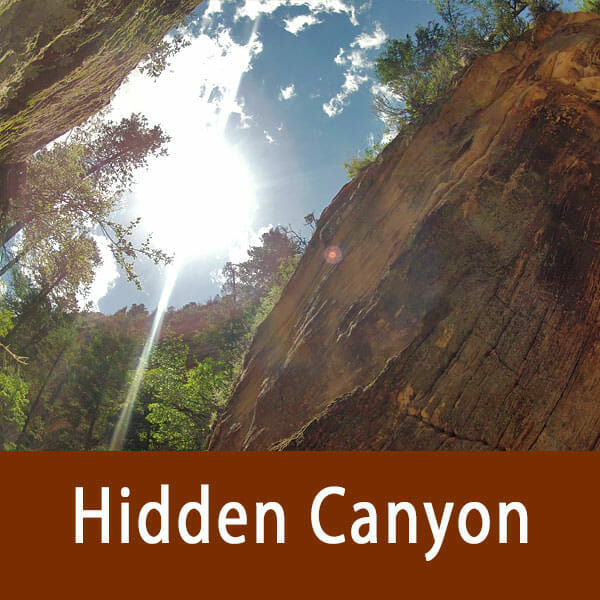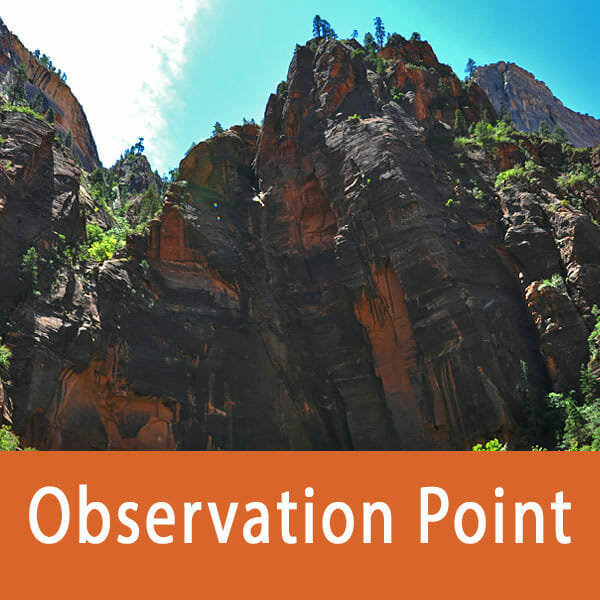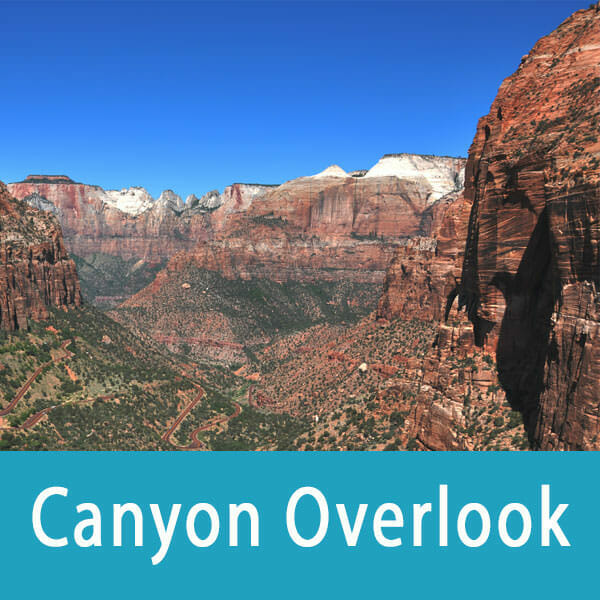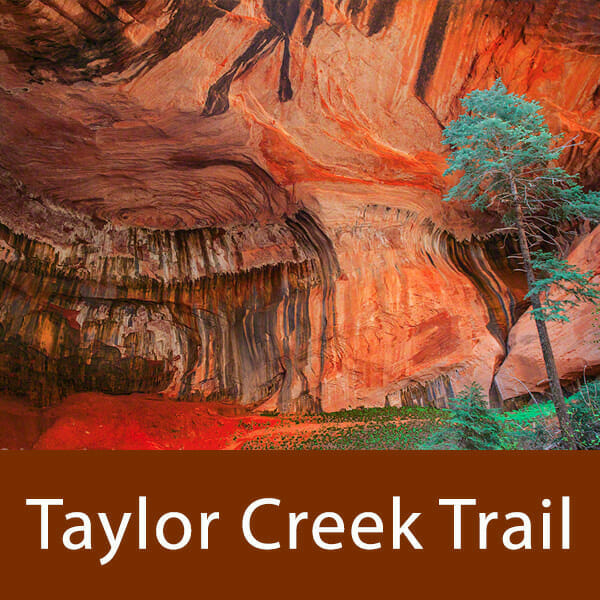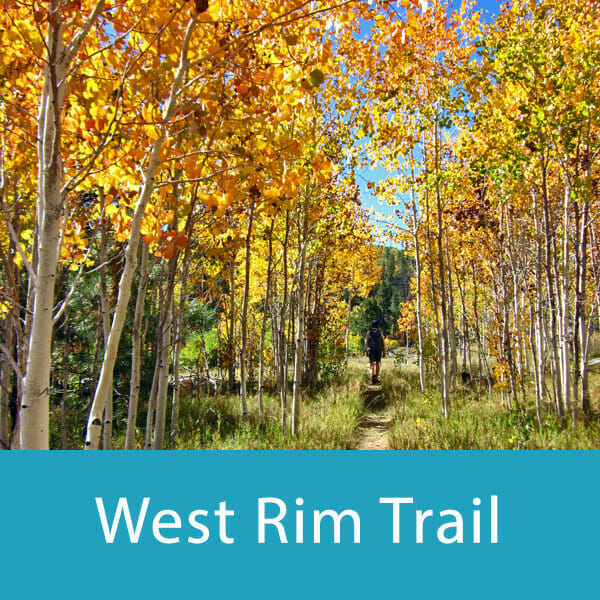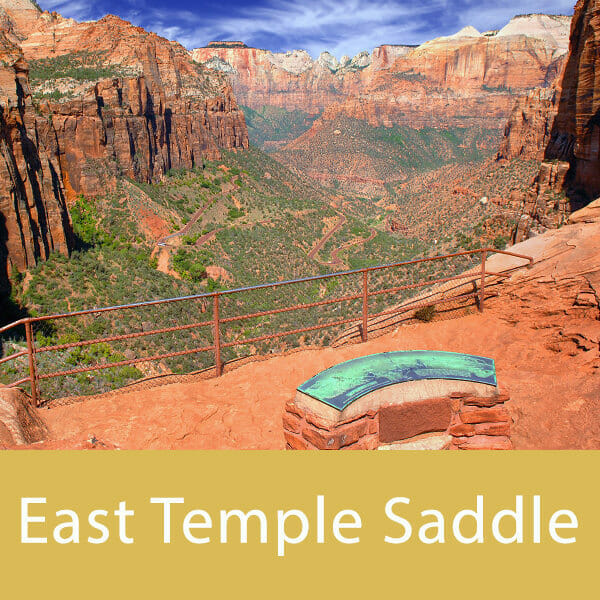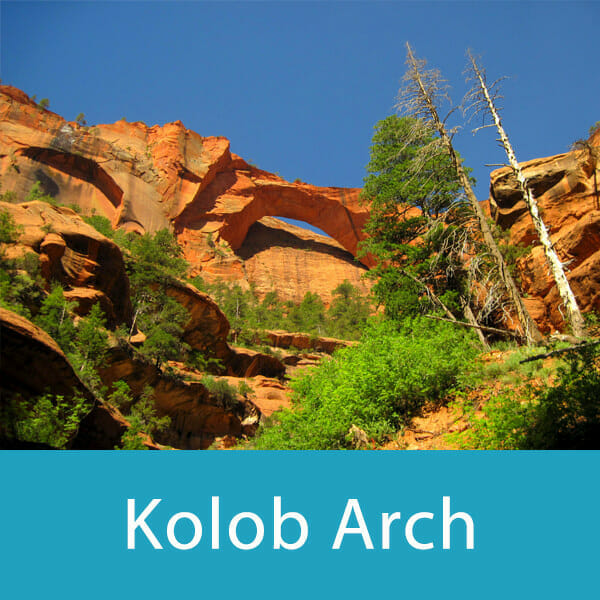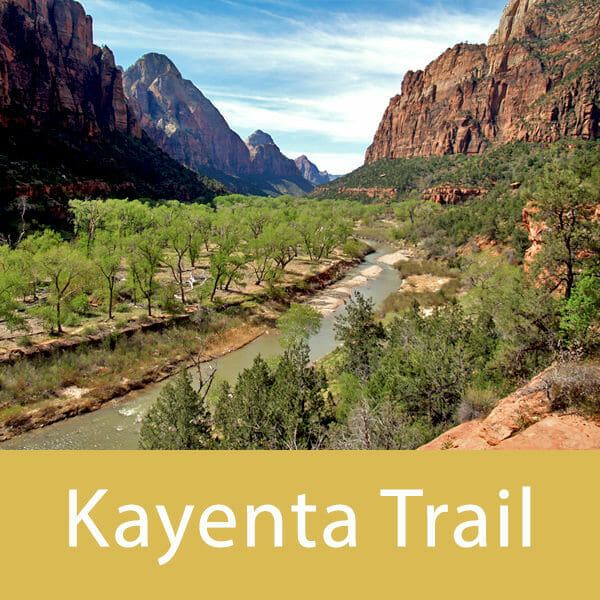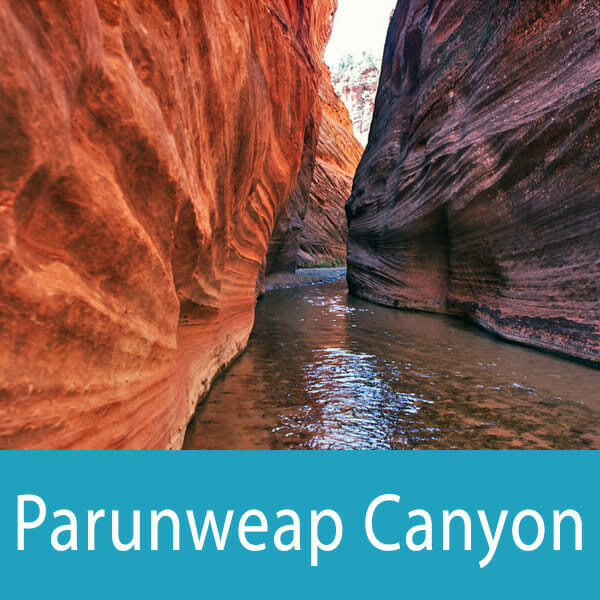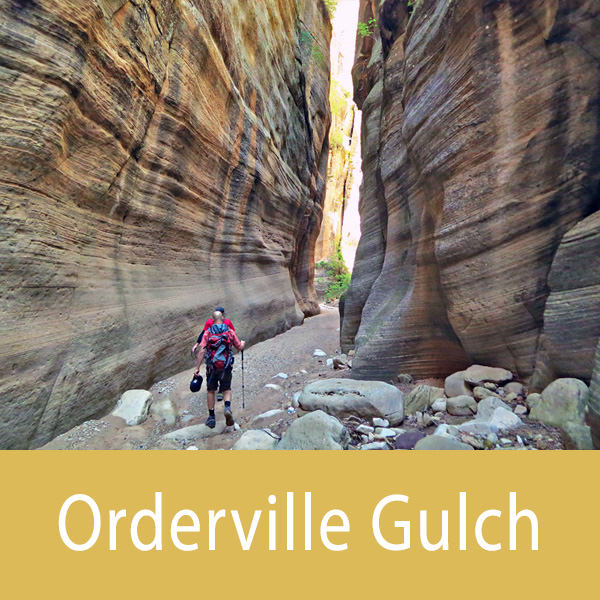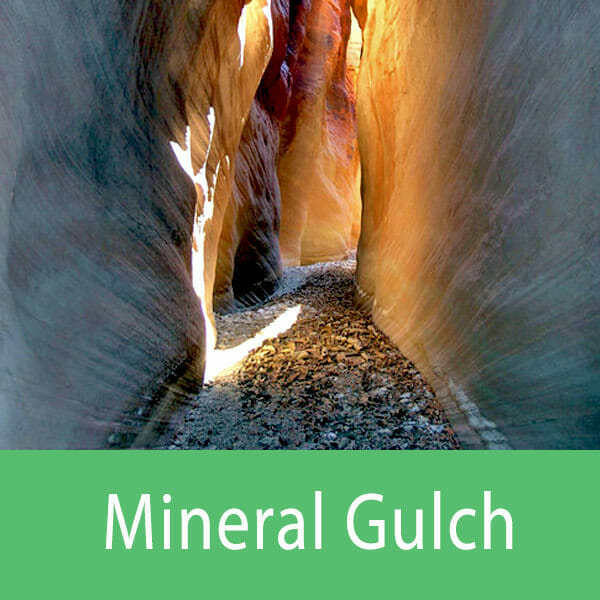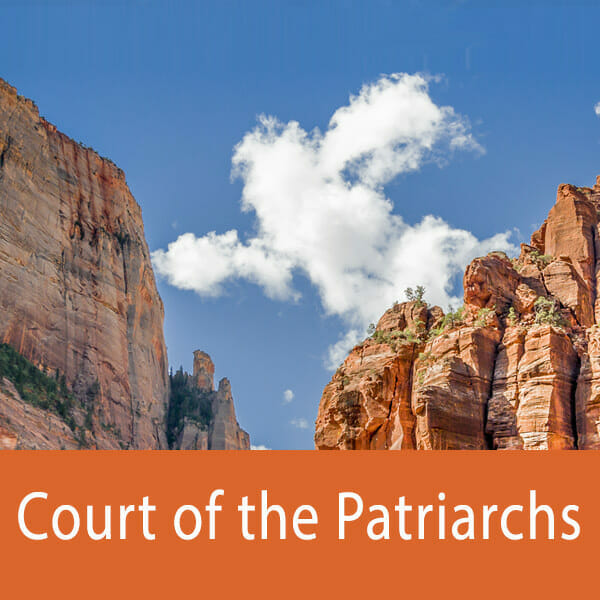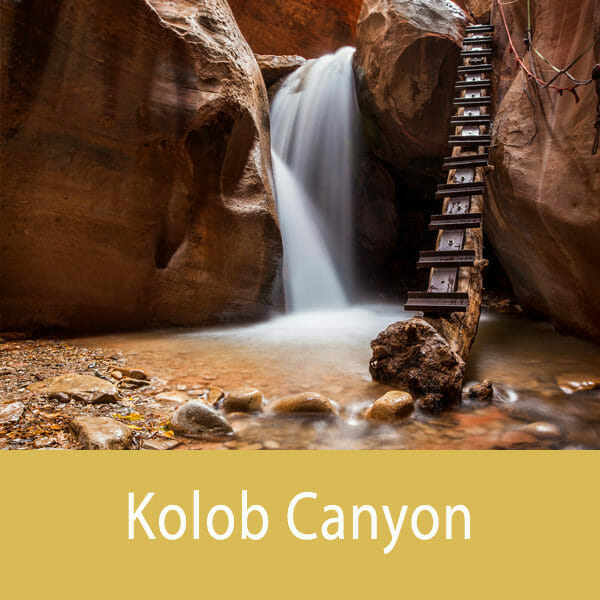Hiking in Zion Canyon
Although Zion National Park offers both scenic driving routes and shuttle services, those who want to get up close and personal with the nature in Zion National Park should strap up their bootlaces for hike. Hiking trails at Zion National Park range from easy to strenuous. The shortest and easiest can be walked within a half an hour, while the longest might take eight hours to conquer. If you can, devote a whole day to exploring the park. The National Park Service recommends sticking just to easy trails if you have less than three hours for your visit. The trails are grouped as follows:
Trail Highlights
Although you will see impressive natural sights, no matter which trail you take as you explore Zion National Park, there are a few areas of the park that really stand out as highlights of this vast landscape. If your hiking abilities and time frame allow, be sure to hike some of the following trails.
The Grotto Trail: This is the park's least strenuous trail. It is only half a mile long and changes just 35 feet in elevation over the course of the trail. The trail goes between Zion Lodge and the Grotto. You can hike both directions on this trail or travel the 2.5-mile loop that is made up of this trail, the Kanyenta Trail, and the Lower Emerald Pool Trail.
Canyon Overlook Trail: A trip to Zion Canyon deserves a breathtaking view of this geological marvel. In fact, the Canyon Overlook Trail provides views of two canyons: the lower Zion Canyon and Pine Creek Canyon. This overlook trail is one mile long and can be hiked in about an hour. Be advised that this trail has elevation changes of over 160 feet, and the path is rather rocky and uneven. This is accessible near the East Side Tunnel.
Watchman Trail: The Visitors Center provides a convenient starting-off point for the Watchman Trail. This hike takes about two hours to complete and gives visitors a good view of the peaks known as Towers of the Virgin. Morning is the best time of day to take in the magnificence of the towers, so you may want to take this hike early in the day.
La Verkin Creek Trail: This trail, which is nearly 15 miles long and takes around eight hours to hike, is the way to get to Kolob Arch. This impressive geological structure is the second-biggest arch in the world. The trail and arch are located in the Kolob Canyons region, which is in the park's northwest corner.
The Narrows: This is not a casual stroll along a maintained trail, but a wild exploration through a gorge in Zion Canyon. In fact, there is no established trail here, as for over half of the journey you are walking in the Virgin River itself. This trek is not for the faint of heart. It is 16 miles long and some areas of the gorge are only 20 feet wide.
Flora and Fauna
Do not let the desert environment of this park fool you. Within its borders lie a great host of plant and animal species. In fact, because the elevation of the park spans a range of over 5,000 feet, there are multiple microclimates contained within this park. The variety of environments makes Zion National Park a comfortable home for a vast range of natural life. As you hike through the park, you are sure to see many of the common plants and animals and may even catch a glimpse of a rare species or two.
As the elevation of the park rises, the plant life that grows in each area changes. Near the Virgin River, there are grasses, mosses, ferns, and even large trees. Shrubs grow in the arid desert regions, as well as grasses. At higher elevations, visitors will spot a variety of conifer plants.

